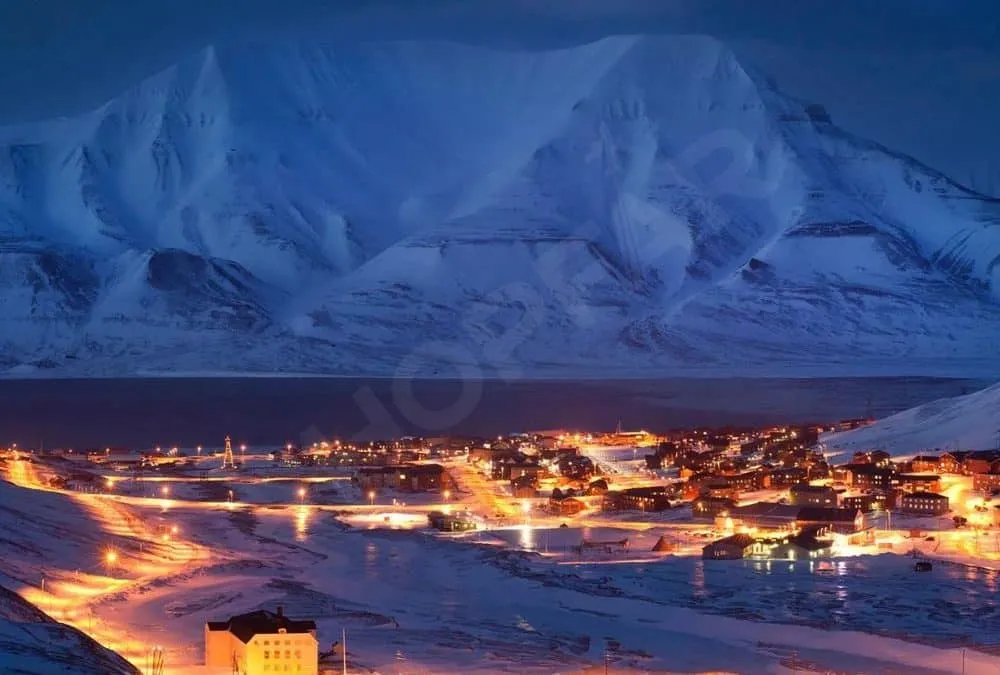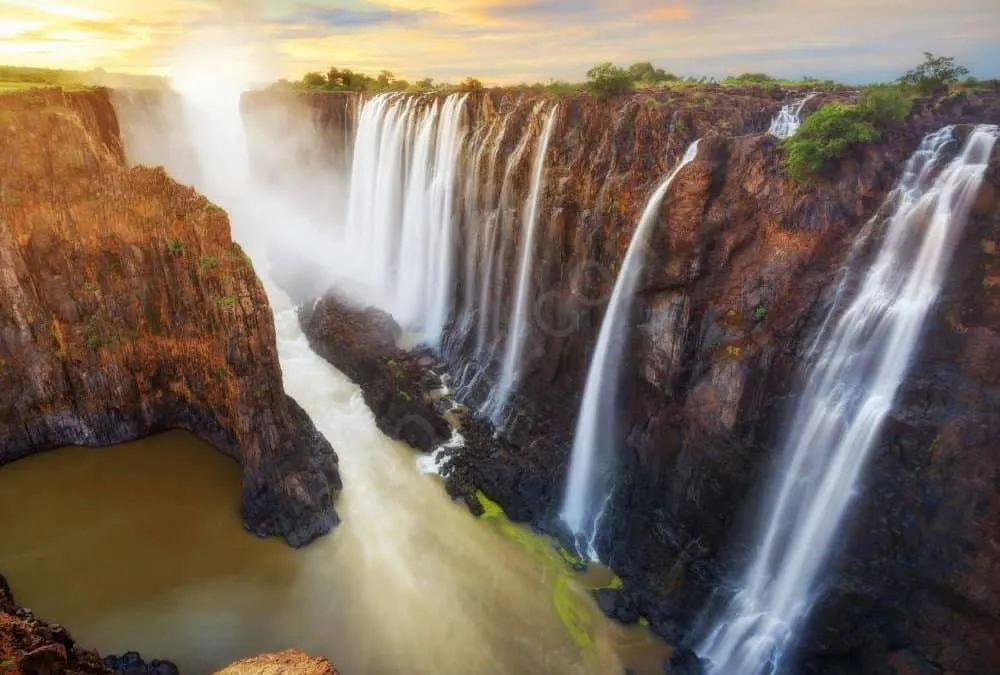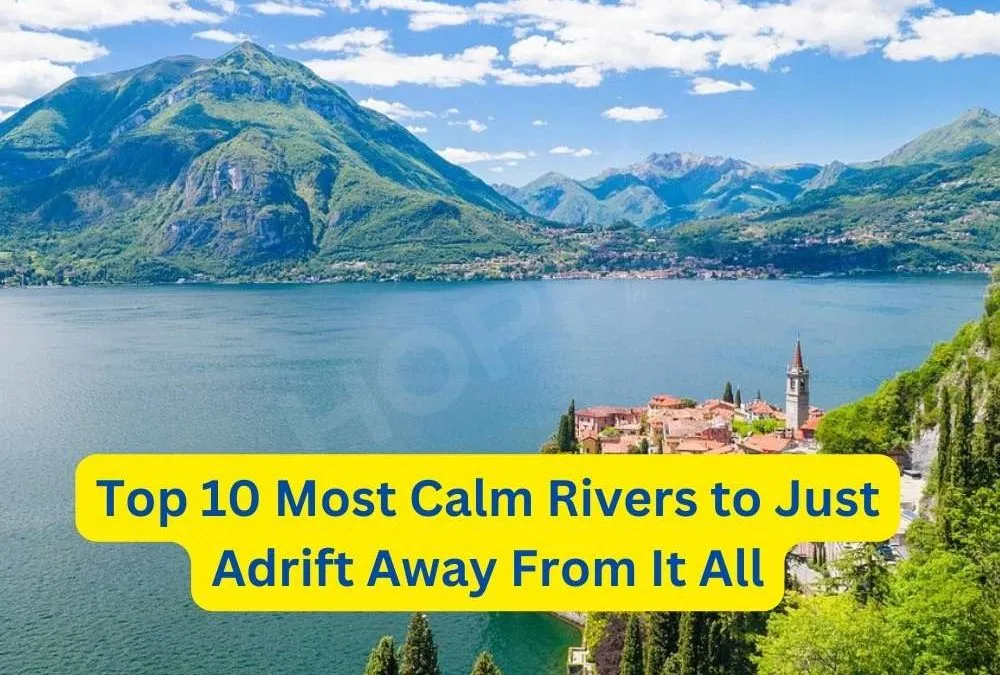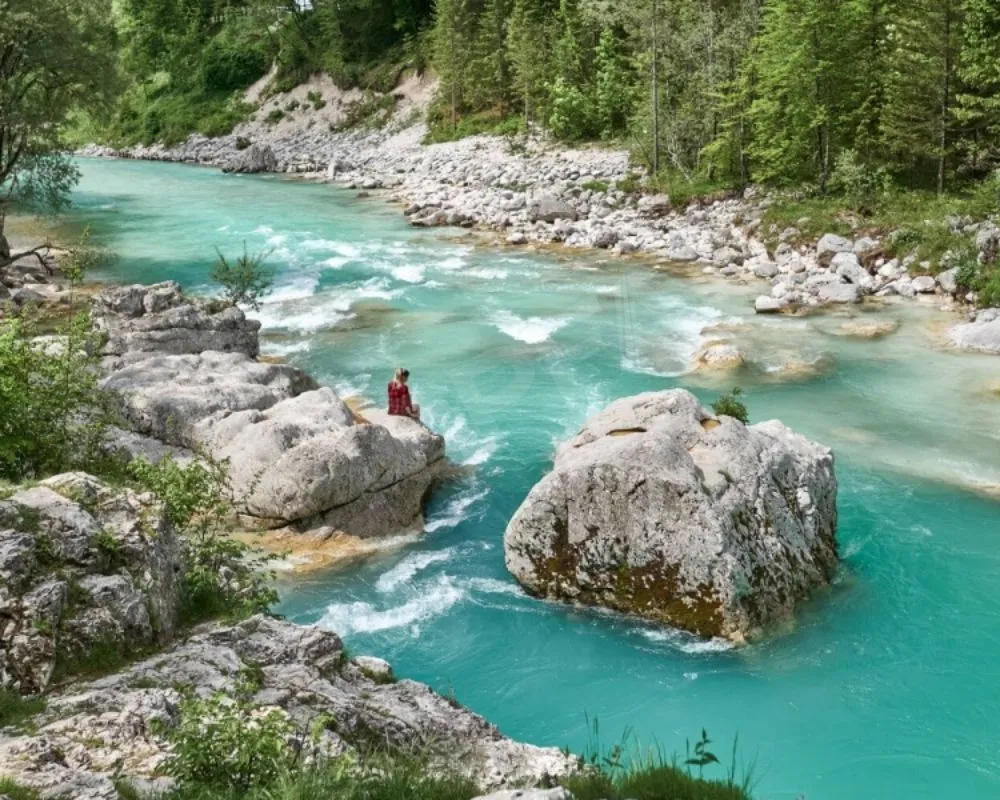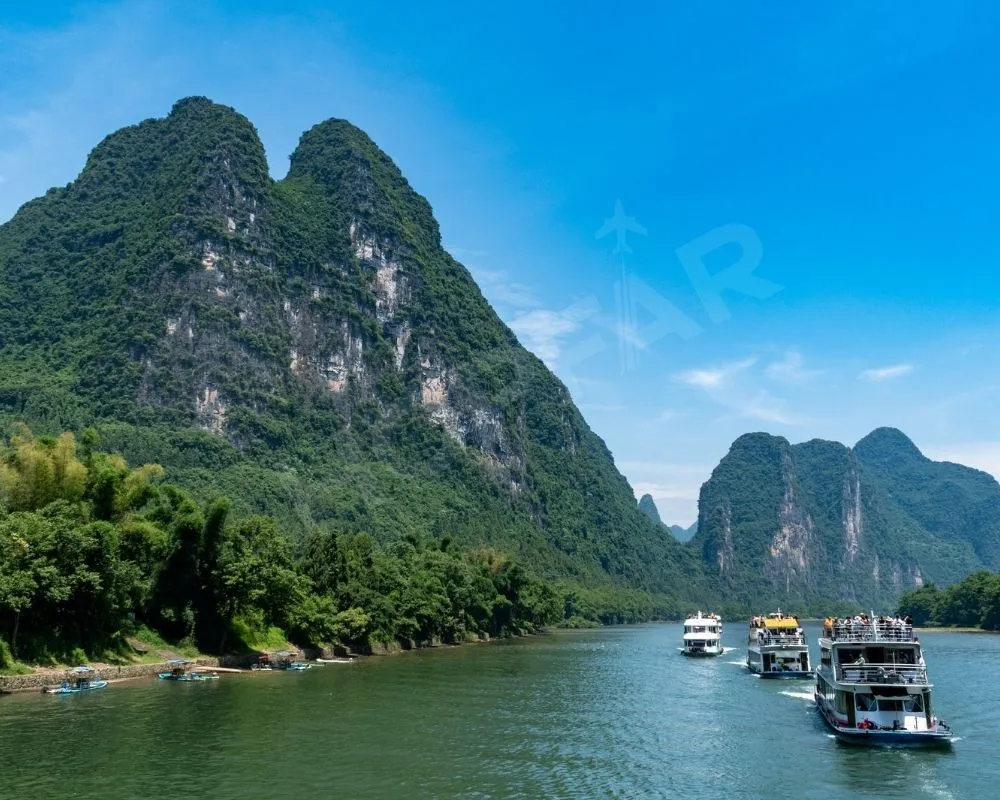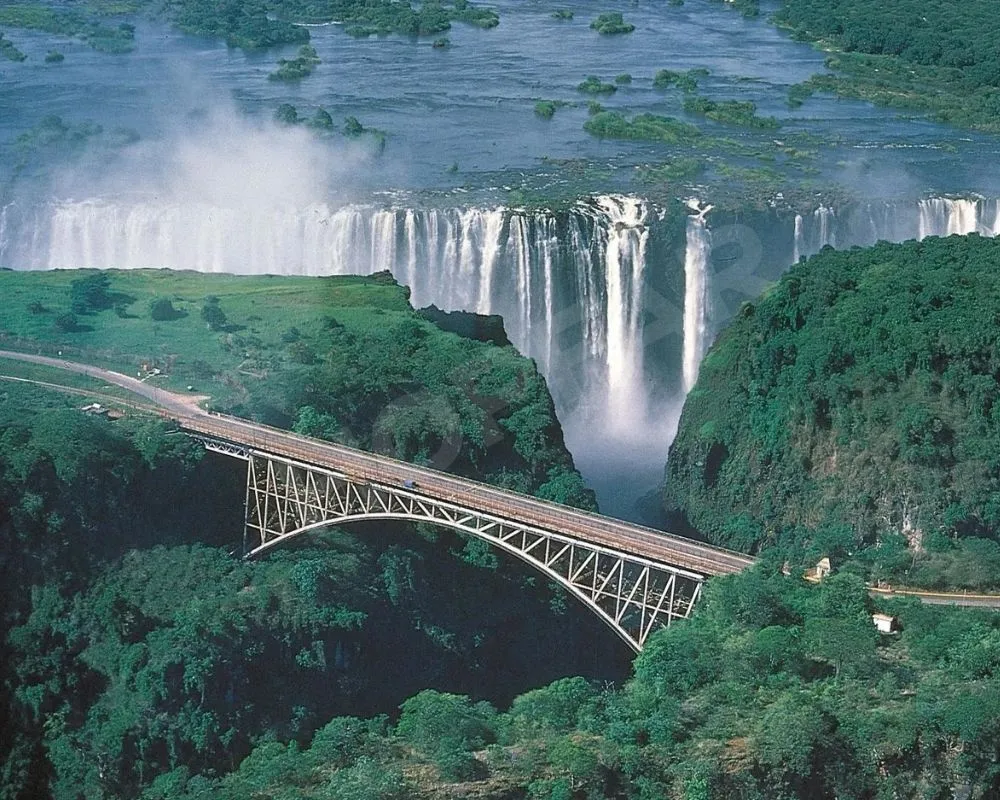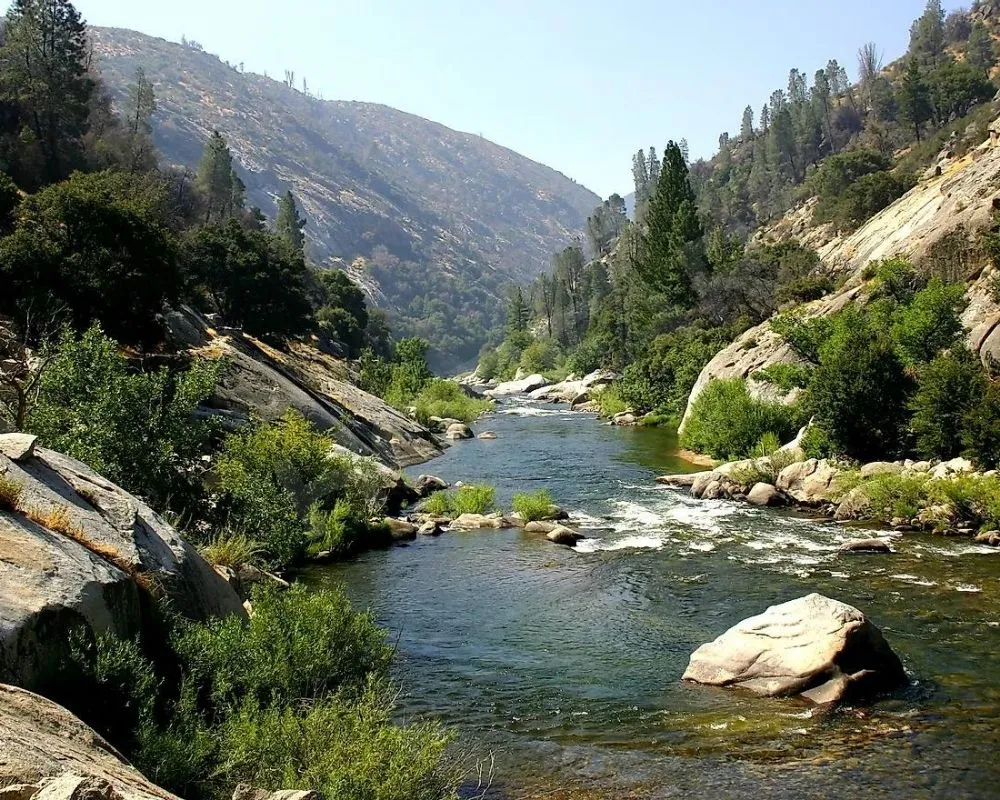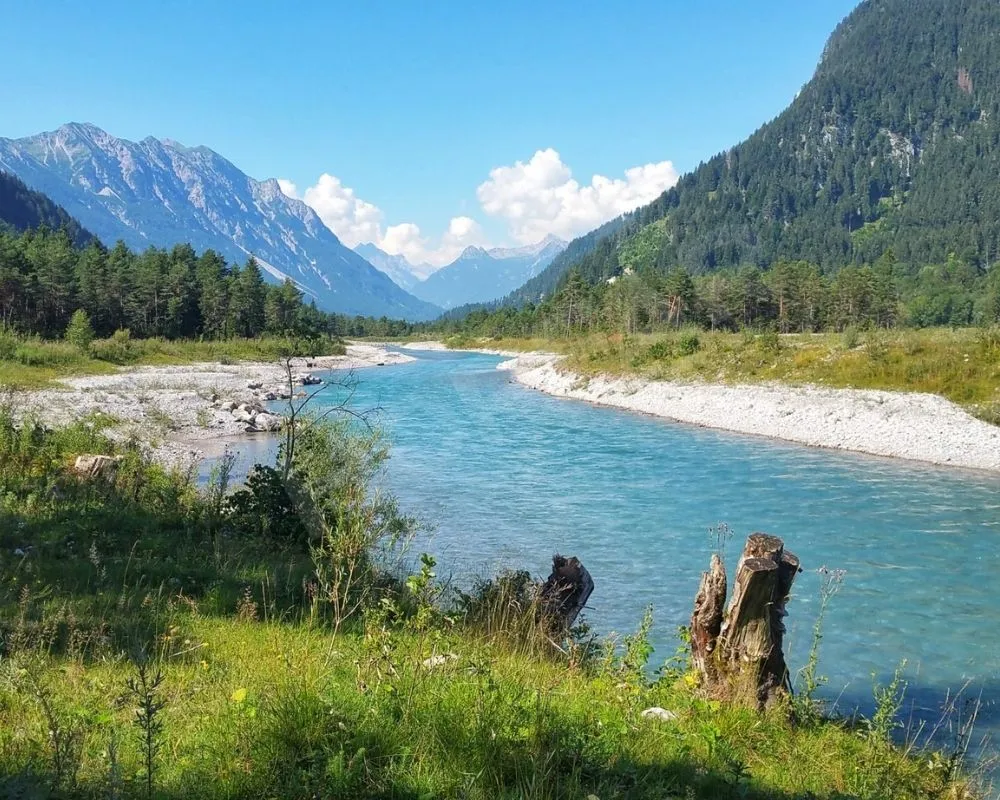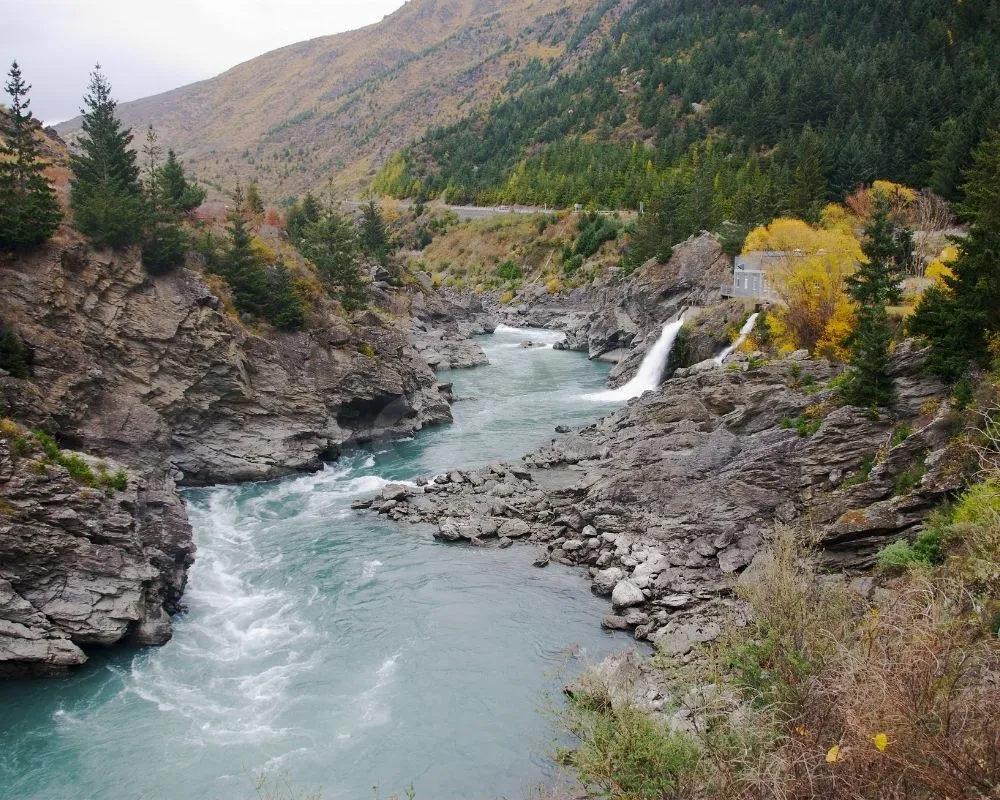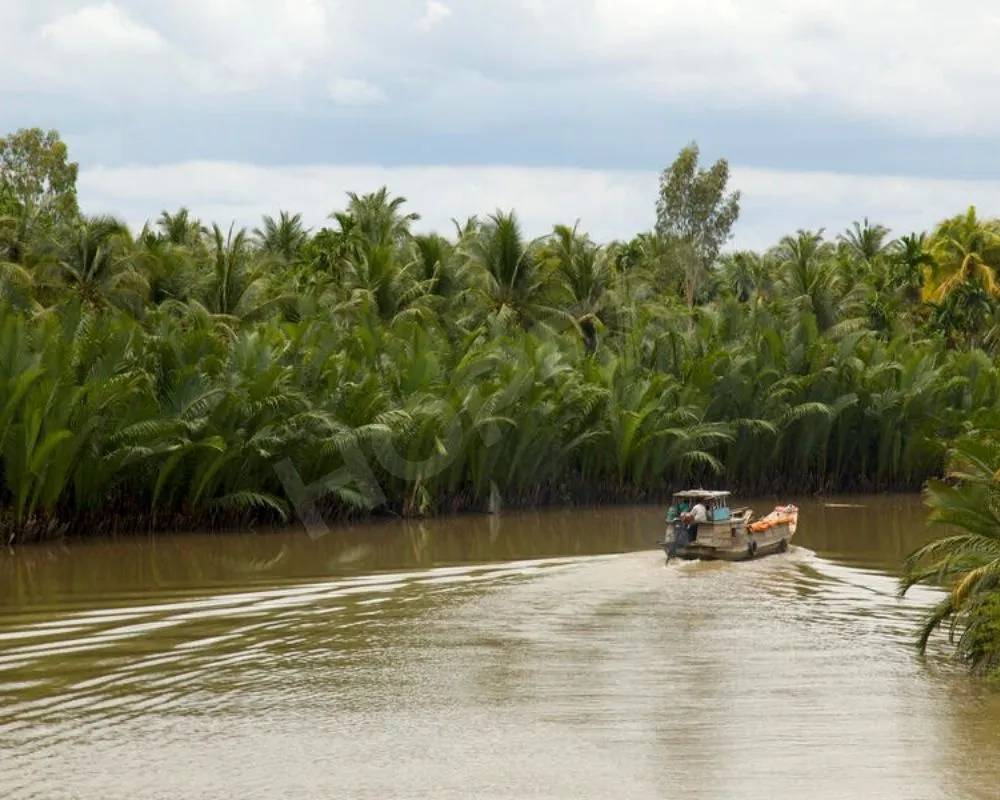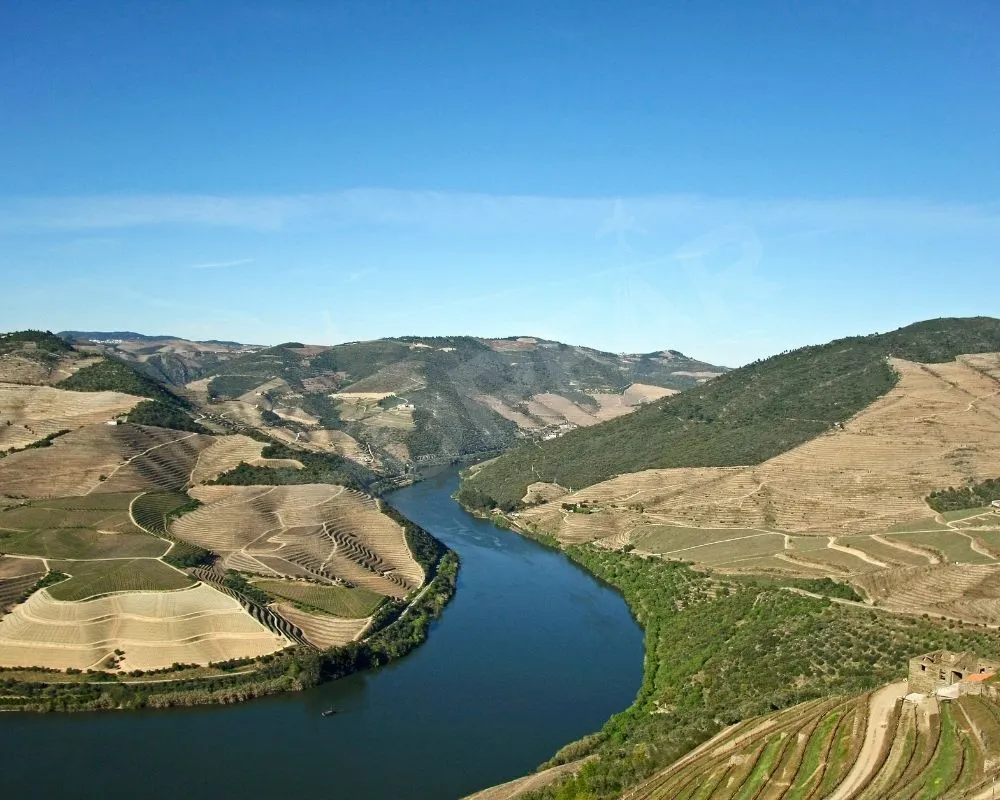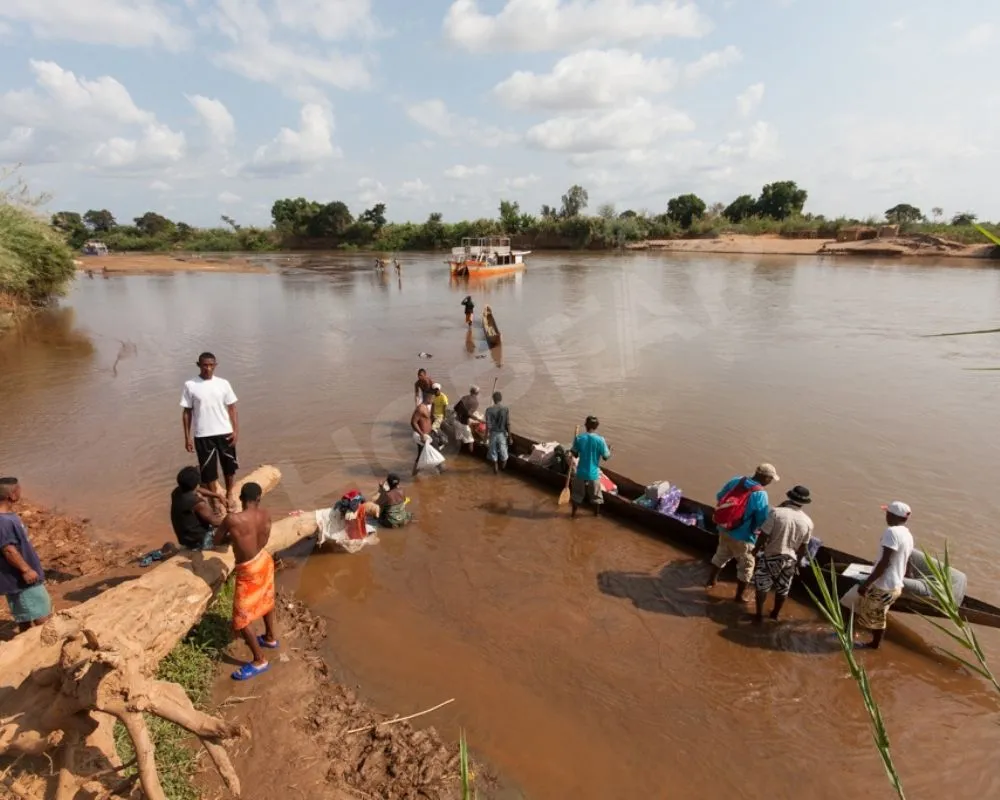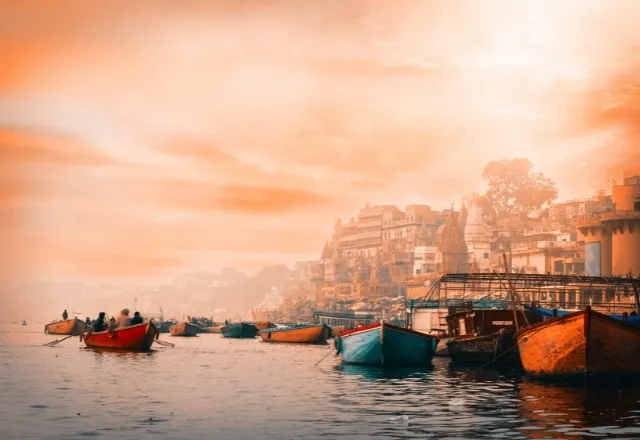
by pankaj | Nov 25, 2025 | Blog, Friends Trip, international, International Destinations, Latest Post, Travel Tips, vacations, Vacations & Leisure
India’s vastness is one of its greatest charms. From the snow-capped peaks of the Himalayas to the sun-kissed beaches of Goa, from the spiritual tranquility of Varanasi to the royal grandeur of Rajasthan, India is a land of contrasts. Here are some top destinations and experiences you should not miss:
1. The Spiritual Heart of India: Varanasi and Rishikesh
Varanasi: As one of the oldest living cities in the world, Varanasi is the spiritual and cultural heart of India. Located on the banks of the Ganges River, this city offers a deep connection to India’s religious heritage. Visitors come here to witness the mesmerizing Ganga Aarti, take a boat ride on the Ganges at dawn, and experience the palpable sense of devotion that fills the air. The temples, ghats, and narrow alleyways are a living testament to India’s ancient traditions and spiritual practices.
Rishikesh: Known as the “Yoga Capital of the World,” Rishikesh is a serene town nestled in the foothills of the Himalayas. It is a popular destination for spiritual seekers, yoga enthusiasts, and adventure lovers. You can join an ashram for a meditation retreat, try your hand at white-water rafting on the Ganges, or simply unwind in the peaceful surroundings of the mountains. Rishikesh is also a gateway to the Char Dham pilgrimage circuit, which includes some of the holiest shrines in Hinduism.
2. The Royal Glory of Rajasthan
Rajasthan, the land of kings, offers a fascinating blend of history, architecture, and vibrant culture. This northwestern state is dotted with grand palaces, fortresses, and colorful bazaars, all of which speak to its royal heritage.
Jaipur: Known as the “Pink City,” Jaipur is famous for its stunning palaces and forts, such as the Amber Fort, City Palace, and Hawa Mahal. The bustling markets filled with textiles, jewelry, and handicrafts make it a paradise for shopaholics. Don’t miss a visit to the Jantar Mantar, an astronomical observatory with fascinating instruments.
Udaipur: Often called the “Venice of the East,” Udaipur is renowned for its beautiful lakes and palaces. The City Palace, which overlooks Lake Pichola, offers breathtaking views, while the Jag Mandir Palace is a serene spot to watch the sunset. Udaipur’s charming streets and vibrant culture make it a romantic and peaceful retreat.
Jodhpur: Known for the majestic Mehrangarh Fort, Jodhpur is the gateway to the Thar Desert. The city’s blue-painted houses give it a unique, otherworldly vibe. The market near the clock tower, with its handicrafts, textiles, and spices, offers an authentic Rajasthani shopping experience.
3. The Beaches of India: Goa and Kerala
Goa: Goa is synonymous with pristine beaches, vibrant nightlife, and laid-back vibes. Whether you’re lounging on the beach, surfing the waves, or exploring the Portuguese-influenced churches and cathedrals, Goa’s unique mix of culture and natural beauty makes it a must-visit destination. Visit the beaches of Anjuna, Baga, and Palolem, each offering a different slice of paradise.
Kerala: Often referred to as “God’s Own Country,” Kerala is famous for its tranquil backwaters, lush green landscapes, and idyllic beaches. Take a houseboat ride through the backwaters of Alleppey, relax in the hill stations of Munnar, or enjoy the cultural performances of Kathakali and Theyyam in local temples. Kerala’s Ayurvedic spas are world-renowned, making it a perfect destination for wellness and relaxation.
4. Adventure in the Himalayas: Leh-Ladakh and Himachal Pradesh
Leh-Ladakh: If you’re an adventure seeker, Ladakh is a dream come true. With its stunning landscapes, snow-capped mountains, and rugged terrain, Leh-Ladakh is perfect for trekking, biking, and river rafting. The monasteries of Leh, like Hemis and Thiksey, offer a peaceful escape, while the magnetic hill and Pangong Lake are just some of the awe-inspiring natural wonders that make Ladakh so unique.
Himachal Pradesh: The Himalayan state of Himachal Pradesh offers some of the best trekking routes in India. Popular destinations include Manali, Shimla, and Spiti Valley. Whether you’re hiking to the top of Triund or skiing in Solang Valley, Himachal offers thrilling experiences for nature lovers and adrenaline junkies alike.
5. South India’s Temples and Culture
Madurai and Chennai: Madurai, home to the spectacular Meenakshi Amman Temple, is a cultural hub in Tamil Nadu. The intricately carved gopurams (temple towers) are a testament to the architectural brilliance of the region. Chennai, a coastal city, offers a mix of historical sites, such as the Fort St. George and Kapaleeshwarar Temple, along with serene beaches and thriving classical dance and music traditions.
Hampi: A UNESCO World Heritage Site, Hampi is a marvel of ancient Indian architecture. The ruins of the Vijayanagara Empire, including the Virupaksha Temple and Vittala Temple complex, transport visitors to a different era. The boulder-strewn landscapes, ancient step-wells, and rock carvings add to the allure of this incredible site.
6. The Northeast: A Hidden Gem
India’s northeast is an enchanting, less-explored region that offers natural beauty and rich cultural diversity.
Sikkim: Nestled in the Himalayas, Sikkim is home to lush valleys, pristine lakes, and magnificent monasteries. Tsongmo Lake and the Nathula Pass are popular spots for trekking and sightseeing, while Pelling offers panoramic views of Kanchenjunga, the third-highest mountain in the world. Sikkim’s Buddhist culture adds to its charm.
Meghalaya: Known as the “Abode of Clouds,” Meghalaya offers breathtaking natural beauty with its misty hills, living root bridges, and waterfalls. The town of Shillong has earned the nickname “Scotland of the East” for its scenic charm, while Cherrapunji is one of the wettest places on Earth.
Tips for Traveling in India
Plan Ahead: India is vast and diverse, so it’s essential to plan your trip according to the regions you want to visit and the time of year. The weather can vary greatly, so packing accordingly is key.
Cultural Sensitivity: India is culturally diverse, and customs can vary from region to region. Respect local traditions, especially in places of worship.
Local Cuisine: India’s food is as varied as its people. Don’t miss out on regional specialties like Biryani in Hyderabad, Rajasthani Thali in Jaipur, and Dosas in Chennai. Just be mindful of the spice levels!
Transportation: India’s transportation options are varied, including trains, buses, taxis, auto-rickshaws, and even camel carts in some areas. It’s wise to book your train tickets in advance for long journeys, and be prepared for the sometimes chaotic nature of traffic.
Safety: While India is generally safe for travelers, always stay vigilant, especially in crowded areas. Be cautious of scams and take precautions when it comes to food and water.
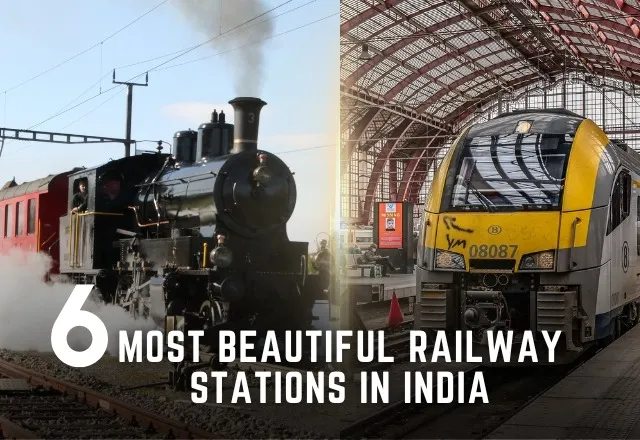
by pankaj | Nov 10, 2025 | Blog, India, Latest Post, Travel Tips, Vacations & Leisure
1). Travelling by train offers a unique experience that surpasses the experience of traveling by planes or cars. The joy of sitting by the window and watching the lush greenery, exciting fields, and waterfalls is truly special. Today, let’s explore India’s most stunning railway stations and scenic routes, which showcase the country’s diverse and beautiful landscapes.
2). Known for its natural beauty, Karnataka is home to some amazing tourist destinations. Among them, Karwar Railway Station is one of the most beautiful railway stations in India. Located in Karwar town, this station is part of the main route connecting Bangalore and Mumbai. Established in 1857 by the British, Karwar is called the “Kashmir of Karnataka” due to its scenic charm. It serves as a major junction connecting major cities like Delhi, Jaipur, Indore, Ernakulam, and Coimbatore. The station and its surroundings are especially beautiful during the monsoon season, offering a captivating experience to travelers.
3). Known for its stunning beaches and vibrant atmosphere, Goa is undoubtedly one of the most beautiful places in India. Adding to Goa’s tourism is the beautiful Dudhsagar Railway Station, which is one of the most scenic stations in the country. Located on the Goa-Karnataka border, Dudhsagar Station offers breathtaking views of the Western Ghats. Bollywood superstar Shah Rukh Khan’s Chennai Express was shot near the magnificent Dudhsagar Falls. The number of visitors attracted to this wonderful place is increasing day by day.
4). Nestled amidst beautiful hills, Kathgodam Railway Station in Uttarakhand captivates travellers with its natural beauty. Connecting Dehradun and Kathgodam, this station is recognized as one of the greenest stations in India, making it a must-visit for nature enthusiasts. Kathgodam Station boasts eco-friendly features such as solar power, rainwater harvesting, and solid waste management facilities. Popular trains like the New Delhi-Kathgodam Shatabdi Express, Lucknow Junction-Kathgodam Express, Ranikhet Express, and Uttarakhand Sampark Kranti Express pass through this scenic station.
5). Located in Himachal Pradesh, Shimla, known for its breathtaking natural beauty, is a prominent spot among India’s hill stations. Surrounded by beautiful hills and lush green forests, the view of this station is very beautiful. Indian Railways has implemented several green initiatives here, including tree planting, solar panel installation, recycling, and waste management to protect the surrounding environment. The station has a rainwater harvesting system that helps in recharging groundwater. As a result, Shimla Railway Station is one of the most beautiful railway stations in India.
6). Located in the Dima Hasao district of Assam, Haflong Railway Station is celebrated as a “Green Railway Station” by Indian Railways. This station connects Haflong to Guwahati and Silchar and is nestled amidst the lush green hills of Assam, offering a beautiful view. Haflong Station has earned recognition for its use of renewable energy, enhanced energy efficiency, and efficient solid waste management practices. Its commitment to sustainability adds to its charm and makes it a great destination for eco-conscious travellers.

by pankaj | May 10, 2024 | Beaches, Blog, Latest Post, Latest Trend, Vacations & Leisure
The wide ocean, with its surface covering more than 70%, is one of the parts of the Earth that remain mostly unexplored. This hermitage is home to innumerable living creatures, of which many are yet to be found. Each year, researchers uncover some new species of animals, provoking our minds beyond the imaginable. Here are 10 of the most captivating recently discovered marine dwellers:
- T. Sponge (Advhena magnifica)
Picture the environment of the deep sea known as the “Forest of the Weird”. This is the location where explorers came across the E.T. Sponge; a white, bulbous creature with two dots positioned on a long elongated stem. Its weird, extraordinary form symbolizes the mysterious beauty that is usually found on the ocean floor.
- Fighting Elvis Worms (genus Stygohadal)
This worm’s ferocious-sounding name is perfectly accurate. These creatures have found their habitat in the Mariana Trench, the deepest part of the earth’s ocean depths. They attack using their sharp jaws that are combined with strong bites for survival in these extreme conditions.
- Tiny Tree-of-Life Tardigrade (ParamicroTARDIS nana)
Tardigrades, also referred to as water bears, boast of their resilience. This new species is the smallest member of the Tardigrada phylum that has so far been discovered in such a vast space as the ocean depths. TARDIS is an affectionate name given by the character, which represents the possibility of enormous things dwelling in the smallest forms.
- Patrick Sea Star (Attenborough yıldız)
This sea star, being named after the beloved cartoon character for its similarity, is adorned with knobby arms and is usually found in the Aegean Sea. This exciting finding is yet another example of efforts to classify the amazing richness among starfish types.
- Blobfish (Psychrolutes marinus
Despite its not being the most outstanding looking, it serves as a fine specimen of adaptation. Its gelatinous body allows it to sustain the extreme pressure of the abyssal area.
Creatures of Myths and Legend
Monster tales about the abyssal predators have been captivating our imagination for centuries. Some of these stories are the source of truth, real beings that were discovered in the sea showing similarities to legendary beasts.
- Vampire Squid (Vampyroteuthis infernalis)
It is a jet-black cephalopod which lives in the twilight zone of the ocean where the sunlight hardly penetrates. Given the bioluminescent red spots and filaments that can be retracted, this animal could easily be mistaken for a character from a gothic novel, playing its role as a predator of any organic matter that falls into the sea.
- Goblin Shark (Mitsukurina owstonii)
This jaw-dropping shark is the oldest, and looks prehistoric, with a pink, protruding snout and rows of razor-sharp serrated teeth. It is a living fossil. Living in the absolute depth of sea, its encounter is rare giving the aura of uniqueness to its presence.
A World of Concealment
Oceans are home to many different habitats which pose major challenges to the organisms who live there. While others do so by mimicking their environment, becoming nature camouflage specialists.
- Flamboyant Cuttlefish (Thysanoteuthis flamboyant)
This marvelous cuttlefish is a resident of coral reefs in the Indo-Pacific region. When threatened it unravels its multi-color body with huge bio-luminescent organisms into a spectacular display that startles predators making it get away.
- Transparent Sea Cucumber (Cucumaria japonica)
This transparent sea cucumber employs the strategy of near-invisibility to escape predators. Its entire body is almost transparent so that light can go through it without much bending.
- Leafy Seadragon (Phyllopteryx taeniolatus)
Blending in perfectly, the leafy seadragon has leaves for disguise, each of which also has leafy protrusions. Such an approach makes it virtually indistinguishable from the kelp forest setting and therefore eludes potential predators.
Giants of the Deep
The fact that the ocean is so vast is a place for creatures that have spectacular size and are only recently being discovered.
- Colossal Squid (Mesonychoteuthis hamiltoni)
The colossal squid, a distinct type of giant squid, is assumed to be the world’s biggest invertebrate animal. They are believed to be over 45 feet in length; still, they mostly stay enigmatic and unstudied. Researchers are clinging to patches of DNA found in predators and camera images taken by submersibles to assemble their existence.
This list is just a small preview of the hidden treasures found in the deep parts of the ocean. New discoveries will continue to be made, and many species are entirely unknown. By keeping on our endeavors of exploring the ocean depths, a lot more bizarre creatures that we can never imagine to exist will keep on emerging, refining our knowledge of marine life and its diversity. The future world ocean exploration is captivating as much as the exotic worlds these discoveries unfold. It also reminds us that the Earth holds as the profound secrets as we would search among the stars.

by pankaj | May 10, 2024 | Blog, Friends Trip, India, Island, Latest Post, Travel Tips, Vacations & Leisure
Earth is wrapped with landscapes, cultures, and experiences that vary tremendously. Those who yearn for leaving everything behind and be in nature without any connection to people. in the most unusual places. Such isolated places attract these adventurous minds with an invisible force. Here, we reveal 8 incredibly remote and beautiful places on Earth, each offering something special for different tastes.
- Tristan da Cunha, South Atlantic Ocean
The island is appropriately nicknamed the “most remote inhabited island” and houses about 200 souls. This volcanic island chain is endowed with amazing scenery, rich wildlife (penguins and more), and allows one to return to a small community. Suppose you start your day welcomed by the noise of the breaking waves, then you hike volcanoes covered with birds and the night sky is lit up just by the stars without being washed out by artificial light pollution.
- Easter Island, Chile
Easter Island’s enigmatic Moai statues remains mysterious and exude an air of enigma. The limited tourist infrastructure on the island simply helps you to think about the statues and the island’s crude beauty in total silence. The chance to walk around the volcanic Rano Raraku crater with the hundreds of Moai at different stages of creation, contemplates the meaning and story behind these ancient artifacts.
- Kerguelen Islands, Southern Indian Ocean
The Kerguelen Islands are also called the “Desolation Islands” that are a subantarctic archipelago known for its isolation and stunning, otherworldly appearance. Here we have massive glaciers moving towards the sea, deeply rooted volcanoes reaching up to the sky, and big bird colonies that turn the black sand beaches white. This is the place for passionate wilderness seekers who are looking for a chance to experience a pristine land that is free of any human interference.
- The Empty Quarter, Rub’ al Khali, Saudi Arabia
The Empty Quarter, also known as the Rub’ al Khali, is one of the largest deserts in the world, occupying most of the Arabian Peninsula. Here, silence is the sovereign, one has the opportunity of meeting the startling beauty of this dread silence of the boundless wheel of sand. In the olden days, camel drivers plied their trade on these unforgiving sands, and you can join the caravans on a similar journey as you travel through the landscape shaped by wind and time.
- Oymyakon, Russia
Within the depths of the Siberian wilderness, there is a small village-Oymyakon, which has become notorious for being one of the chilliest inhabited places on Earth. Here temperatures are often under -60°C (-76°F). Despite severe conditions, a small community thrives there. A way of life that is unique and is closely adjusted to overcome the Siberian winter – the severity of which is a testament to the human adaptability.
- Ittoqqortoormiit, Greenland
On the east coast of Greenland, the settlement of Ittoqqortoormiit is small but is surrounded by a beautiful environment. Here, whooping mountains stand mesmerizing in front of the glaciers touching the icy fjords proclaiming a spectacular scenery. Experience live Inuit culture and discover that for them dog sledding is an everyday thing and lose yourself in the outstanding natural beauty of North Pole.
- The Changtang, Tibet
Usually called “the roof of the world”, Changtang is the highest plateau that is located in Tibet. The small population of this region lives off nomadic herding and is the habitat to wildlife specifically adapted to the harsh conditions here. See the yak herding tradition of centuries be at work and contemplate at the never-ending sight of snow-peaked mountains hovering over the horizon.
- Longyearbyen, Svalbard, Norway
Situated at the northernmost point of permanent settlement on the whole planet, Longyearbyen features a juxtaposition of remoteness and modern conveniences. Have a chance to travel about the stunning Arctic tundra on snowmobiles or dog sleds, experience the majestic Northern Lights bring colors all over the sky, and explore the unusual difficulties and ways of life in this extreme environment.
This is just a peek into the never-ending variety of the remote corners of the world. Keep in mind that the further off the beaten track you travel, the more likely that advanced planning and logistical thinking are needed. Make sure to research about the transportation, about legal permits, and that you bring enough supplies and equipment before heading out, these will help to make your trip safe and enjoyable.
But, having the adventurous travelers in mind who are looking for escaping and who want to experience something extraordinary, the rewards of venturing off the beaten track are boundless. It is impossible to imagine just looking up at the sky glittered with stars without any trace of light pollution, and it gives breathtaking feeling to watch wildlife in their natural habitat. Off-the-beaten-path spots help us disconnect from urban madness, understand different ways and create indelible memories.
The mystique of being by oneself is not just confined to the tourist hot spots. The earth still houses some wild spaces just waiting for us to explore them. Picture yourself walking through uncharted rainforests full of unseen plants and animals or following the traces of ancient caravan across a barren landscapes. The processes required for such missions involve a lot of planning, expertise and an intrepid taste, but the returns can be immeasurable.
It has to be acknowledged that the same features that bring seclusion at the same time bring instability to these places. Untouched ecosystems and indigenous cultures are usually the most affected by the increasing threats. Sustainable tourism practices and giving priority to local communities are of importance in such an isolated place just to ensure that it will be explored a generation later. As such, approach them with gentleness, immerse yourself in the local culture, and just leave your footmark when you stumble upon these unique places in the world.

by pankaj | May 10, 2024 | Beaches, Destinations, Honeymoon planning, Island, Latest Post, Mountains, Romantic, Swimwear, Tips, Travel Tips, vacations, Vacations & Leisure
Waterfalls, these natural phenomena, have mesmerized humans for decades, attracting people from all over the world to their breathtaking displays of the power and beauty of nature. Here, we discuss the specifics of 10 of the most stunning waterfalls in the world, each one with its own irreplaceable character and natural beauty.
Angel Falls, standing as the world’s highest unobstructed waterfall at 979 meters (3,212 ft), can be considered a peerless work of nature plummeting off the Auyán-Tepui range in Canaima National Park in Venezuela. The Churún River is responsible for this whole deal since it eventually unites with the Caroní river, which then flows into the Atlantic Ocean, thus making Angel Falls a marvel not only for the eyes but also an integral part of the local hydrological system. Named after Jimmie Angel, an American aviator who first flew over the falls in 1933, Angel Falls is also known locally as “Kerepakupai Merú,” which translates as “waterfall of the deepest place.”
- Tugela Falls (South Africa)
Located in Royal Natal National Park, South Africa, the Tugela Falls falls from the Drakensberg Escarpment with a height of 948 m (3,110 ft), which makes it take the second largest place in the world among the waterfalls. Along the way, its waters from the Tugela River flow into the Indian Ocean, further improving the ecosystem of the surrounding region. The cultural significance of Tugela Falls is rooted in the Zulu people who have considered the Drakensberg Mountains as sacred and named the falls as “Thukela,” literally meaning “sudden.” The visitors experience the full magic of the falls during the rainy season from November to March.
- Tres Hermanas Falls (Peru)
In the middle of the Cordillera Escalera mountain range in Peru, Tres Hermanas waterfall is located with 3 falls height of 914 meters (2,999 ft). The falls feed into the Utubamba River which in turn connect to the Amazon River Basin, the main resource for communities and wildlife in the area. The name “Tres Hermanas” characterizes the three parallel streams that run together to form the falls which contribute to its beauty and mystery.
4.Olo’upena Falls (United States)
A 900 meters (2,953 ft) high cliff on the Molokai Island in Hawaii is where the amazing Olo’upena Falls are located. Its isolation amplifies the mystery, being only reachable by helicopter, creates a privileged hanging place. Olo’upena Falls belongs to Halawa Valley, which is related to the Hawaiian culture and history in this place. Therefore, visitors will not only be in front of the natural wonder but also the connection to the island’s cultural heritage.
5.Yumbilla Falls (Peru)
Deep inside Peru’s Cordillera Escalera, there is a Yumbilla Fall that falls down 890 meters (2,920 ft) at the source of the Yumbilla River. As part of the Amazon River basin, its waters are responsible for one of the most biologically diverse regions on the planet, providing habitats to thousands of species of plants and animals. Yumbilla Falls is a component of a series of waterfalls in the region that includes Gocta Falls, the famous waterfall in the Peruvian rainforest, which makes it an attractive destination for nature-seekers.
6.Kela Waterfall (China)
Kela Waterfall being a part of Yunnan Province in China and with the Nu River fueling its unbelievable flow, it stands at a height of 870 meters (2,854 ft) in the middle of a green forest. However, as its waters merge with those of the Salween River, the latter finds itself flowing to the Andaman Sea, and in the process, shaping the scenery and lifestyles. Kela Waterfall is situated in the Gaoligong Mountains which are known for their high biodiversity, housing rare animal species like the Yunnan golden monkey and clouded leopard.
7.Waiʻīanu Falls (United States)
Perched on the beautiful Kauai Island in Hawaii, Waiʻīanu Falls captures the view with its streams falls of 860 meters (2,825 feet), the source being the Hanakāpīʻai Stream. The passage of the stream to the Pacific from the island is a witness of the natural allure of the area and the power of water to change landscapes over time. Waiʻīanu Falls is enveloped in the lush natural surroundings near Kauai’s western coast, Na Pali, and it is one of nature’s greatest wonders for one to see.
8.Mutarazi Falls (Zimbabwe)
Plunging 762 meters (2,500 ft) straight down the Chimanimani Mountains located in Zimbabwe’s Eastern Highlands, the Mutarazi Falls is a majestic natural wonder. Its streams feed the Sabi River system, which in turn sustains a wide variety of ecosystems and communities as well as the Indian Ocean. Mutarazi Falls forms the main attraction in Mutarazi National Park which is a protected area famous for its incomparably rich orchids, rare orchids, endemic bird species, and diverse flora and fauna.
9.Jacobabadal Falls (Suriname)
The surging waters of Jacobabadal Falls plummet 2441 ft into the crevice of Tabiki Creek, which is located within the Sipaliwini Savanna of Suriname. Its flowing waters finally unite with the Corantijn River, extending the underlying prosperity of the Atlantic Ocean. Jacobabadal Falls is found in Tumuc-Humac Mountains, which is known for its unspoiled wilderness and distinct geological landmarks, treating a visitor to the unadulterated Suriname’s ecosystem.
10.Kaieteur Falls (Guyana)
Usually being praised as one of the most scenic water drops on the planet, Kaieteur Falls on the Potaro River in Guyana surpass the 226 meters (741 ft) mark. Its multi-faceted gush over a sandstone cliff into a tranquil pool beneath is proof of the creativity of nature. As a tributary of the Essequibo River, Kaieteur Falls is the main factor in the hydrological cycle in the region that enhances the Atlantic Ocean. Kaieteur falls are part of Kaieteur National Park, a protected area full of exclusive flora and fauna, some of which are as rare as the Guiana cock-of-the-rock and the golden frog.
Although these 10 waterfalls present only a small glimpse into nature’s splendor, the world holds many other falls, each with its own captivating form and undeniable significance. From the impressive Ban Gioc Falls on the Vietnam-China border to the amazingly beautiful Seljalandsfoss Waterfall in Iceland, the beauty and power of waterfalls around the world remind us, time and time again, of the majesty of nature and how everything on our planet is connected.

by pankaj | Mar 7, 2024 | Blog, Latest Post, Travel Tips, Vacations & Leisure
Streams with their perpetually flowing current have fascinated humans since ancient times. Their power can be extraordinary but they can also produce a calmness that dismisses all the burdens. If you’re seeking a tranquil escape, look no further than these ten rivers around the world, each offering a unique blend of natural beauty and peaceful ambiance.
- The Soča River, Slovenia

The Soča, which pushes through the Julian Alps, is quite a sight with its shimmering emerald green waters. Soft waves and scenery of snow-capped mountains in the background make it very nice for kayaking or relaxing at the banks with the soothing sounds of water. Picture yourself dipping your toe into the chilly water and unwinding as you look up at towering mountains and see their reflections cast on the glassy surface.
- The Li River, China

This poetic landscape, with the majestic limestone karst cliffs, has been the source of inspiration for Chinese artists for centuries. Sail the Li River in a slow boat and enjoy how the mirror-like surface showcases the wonderful cliffs. Through the scent of the flowers and sounds of the waves touching the shoreline, a symphony of natural tranquility calms the soul.
- The Zambezi River, Zambia/Zimbabwe

While the Zambezi does accommodate the magnificent Victoria Falls, the upper ripple presents a different kind of magic. There, away from the roaring waterfalls, hippos bask on the banks of the rivers, and the waterways surrounded by papyrus plants become an oasis of peace for wildlife observation. Slide quietly through this aquatic safe haven where you can look for the elephants that are swimming in the shallows as well as exotic birds that are darting around the reeds.
- The Kern River, California, USA

Forget Californian urban monotony and escape into the Kern River. The fact that it is gently current and is crystal clear, thus perfect for a celestial blue sky reflection, makes it an ideal float place. Enveloped by towering pines and granite cliffs, Kern River is like heaven, especially for those who seek to be one with the seemingly calming nature amidst the noise syndrome.
- The Lech River, Austria/Germany

This peaceful stream gently winds its way through the Bavarian Alps, providing the most stunning views of green landscape and quaint houses. Things about wild European rivers are different with this tame Lech river. Hire a bicycle and explore through the Lech’s path to discover a spot to sit down, relax, and find the fresh mountain air and the gentle tones of the water. Breathe deeply and feel the surroundings become calm and soothing.
- The Kawarau River, New Zealand

Well-known for its bungee jumping adrenaline rush, Kawarau River provides its less thrill-seeking visitors with a different side. The gentle rapids and amazingly clear water here make it ideal for quiet riverside adventure or trying your luck at trout fishing. Drop a fishing line to escape the burdens the world brings you, and instead feel the tug on it, and be content with the peaceful view, as the mountains around you are reflected in the water below.
- The Mekong River, Southeast Asia

While the mighty Mekong River flows through Southeast Asia, it displays a traditional realm of the bygone era. Come aboard and explore life as it was meant to be, authentic and unhurried villages, vibrant floating markets and a natural charm you will not find anywhere else. It will be like you are living in the constant flow of the river and the timeless traditions that developed over the river’s banks for several centuries.
- The Douro River, Portugal

Run down the Douro Valley, a UNESCO World Heritage Site, to the glittering vineyards rolling down to the riverfront. Little villages with terracotta-tiled roofs are somewhere on the horizon, providing the scene with an extra measure of serenity. Visualize yourself taking a sip of the port wines produced precisely from them, the taste coinciding with the peacefulness of the valley and the softness of the Douro.
- The Tsiribihina River, Madagascar

Feel the excitement even peacefulness during a thrilling but peaceful adventure down the Tsiribihina River in Madagascar. Learn everything you can about the wildlife that lives in this region as you pass through the huge caves created by the river, including the endemic lemurs that sunbathe effortlessly in the shade under the trees. After a day of wandering, camp under a cover of stars to express an incomparable emotion of being in nature’s arms. Let the kind stream release you downstream in such a way that the sound of rushing water and chirping birds becomes your lullaby, the narrative of beautiful slumber.
- The Everglades National Park, Florida, USA

Glide silently through the “River of Grass” in the Everglades National Park. This meandering river harbors a vast diversity of wildlife, for example alligators and manatees as well as a number of species of birds. Let your senses be enveloped by the quietness of the sawgrass prairies and the talking mangroves. Float through the thicket of the waterways, be vigilant for a gator basking on the shore, enjoy the rhythmic rocking of the canoe that sucks you into complete tranquility. As the flow of the water caresses the canoe and submerge into a chorus of buzzing insects, my mind is refreshed from any anxiety. With the sun touching the horizon so you know you’ve discovered a place to be tranquil when in the heart of the Everglades, you are aware that the sky is filled with multicolored hues of orange and pink.
From the emerald glows of River Soča in Slovenia to River Mekong in Southeast Asia with its timeless serenity, the list gives you not only a hint but also evokes images of the world’s most serene rivers. Each destination stands at the door to a rather special place where you can find peace and outstanding harmony with nature. Whether your dream is to enjoy a slow float trip through California forests, experience nature at its best in wildlife Madagascar Tsiribihina, or discover the culture while you on Mekong, the rivers above offer you the escape from the day-to-day life and the time to reconnect with the power of nature. Therefore, get your bags packed, take the paddle to the rivers, and just let go and allow the relaxing power of flowing waters to set you free.




